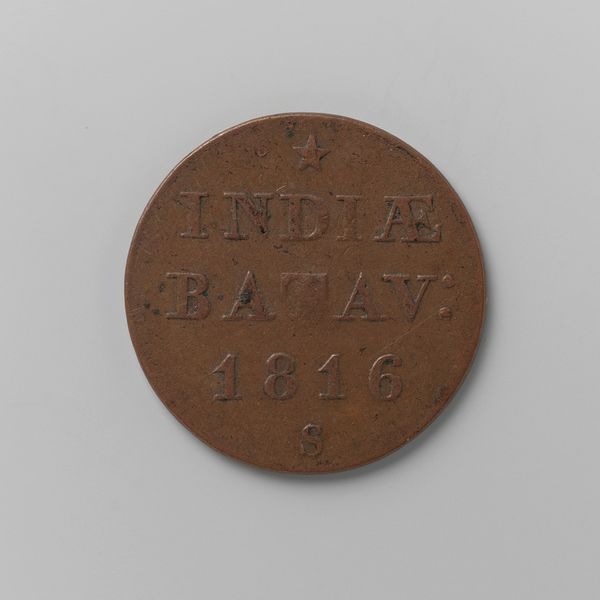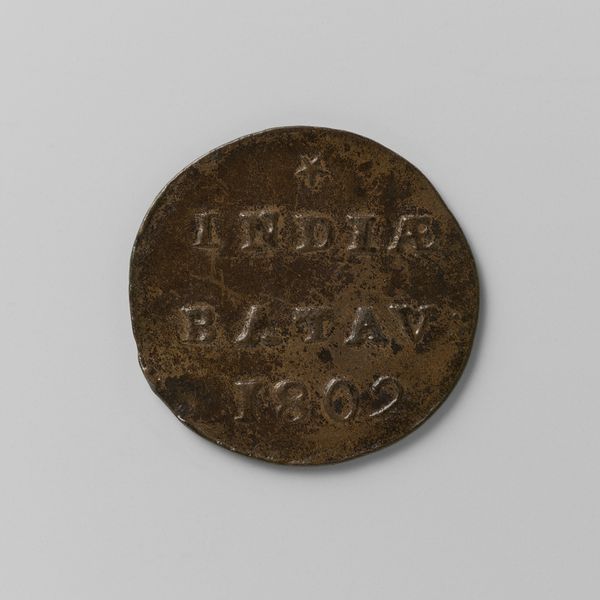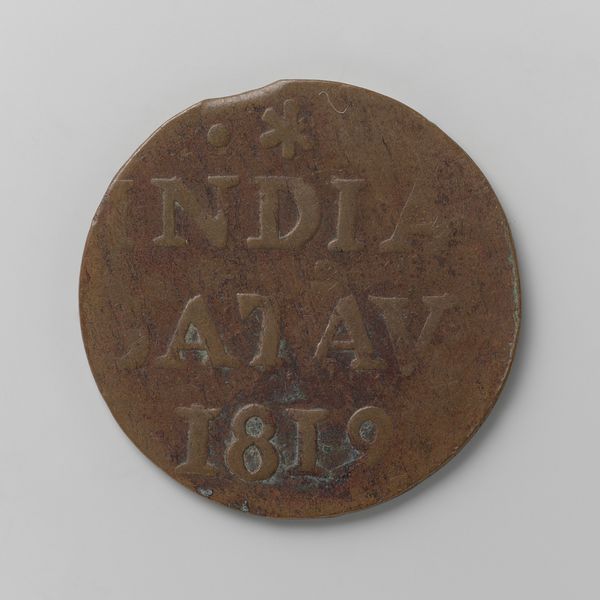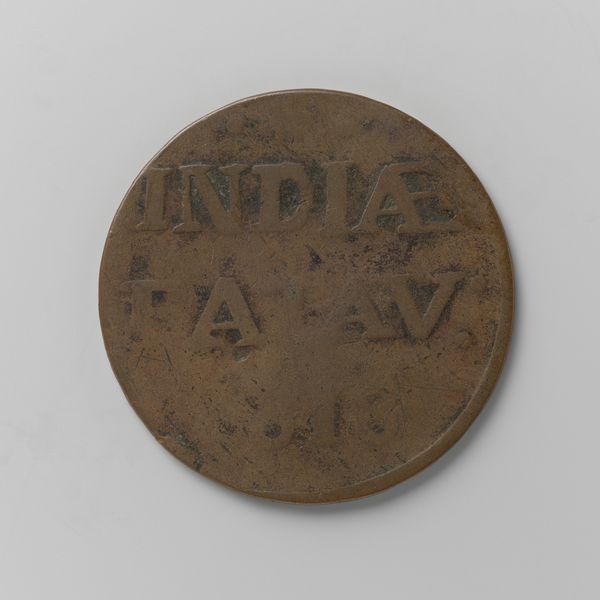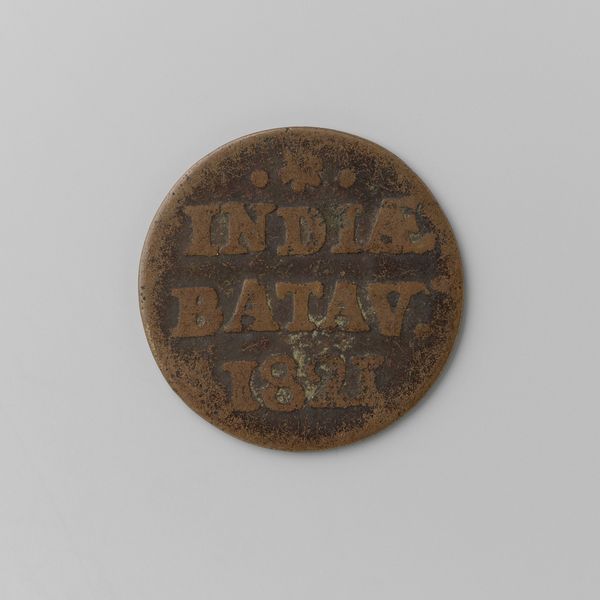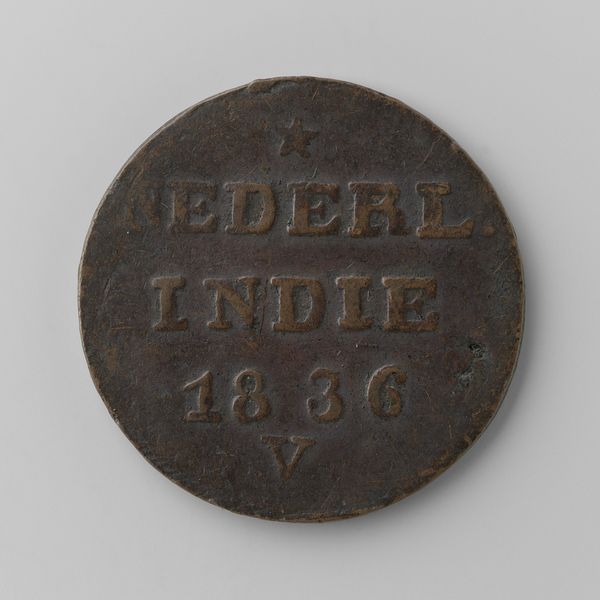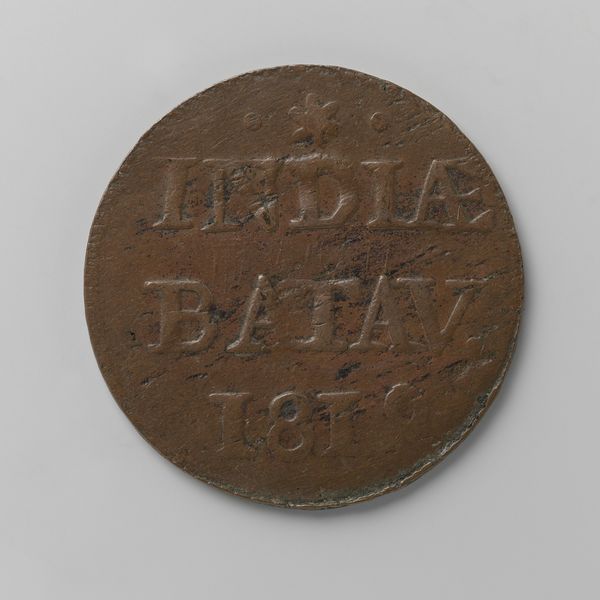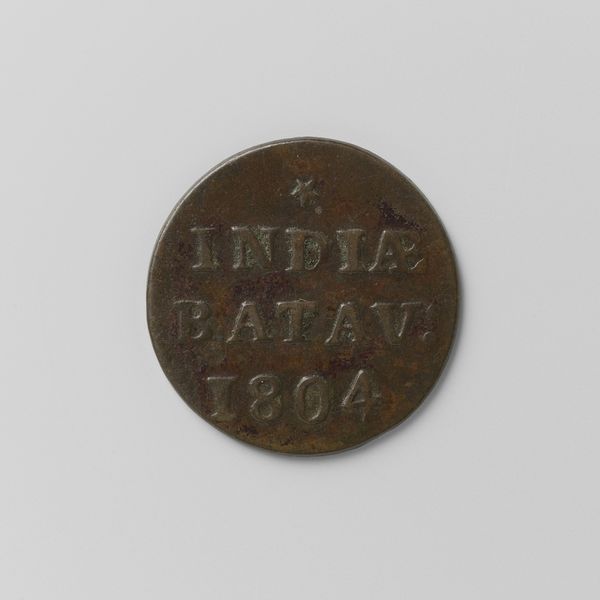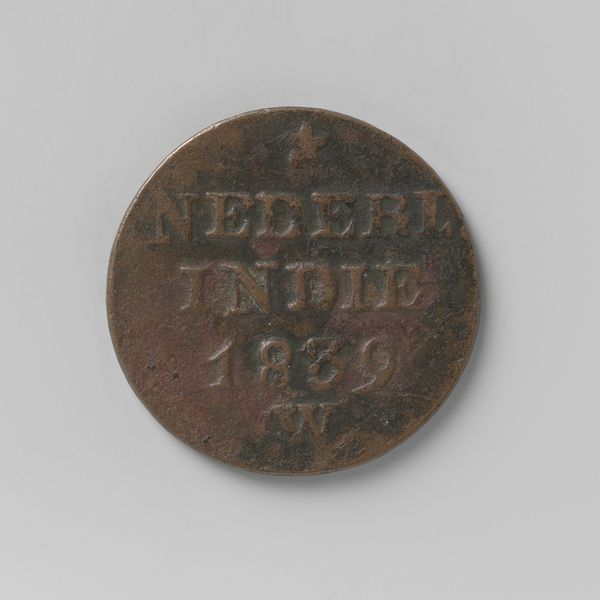
print, metal, engraving
# print
#
metal
#
ancient-mediterranean
#
embossed
#
coin
#
engraving
Dimensions: diameter 2.2 cm, weight 3.05 gr
Copyright: Rijks Museum: Open Domain
Curator: This is a Dutch East Indies Duit, struck in 1822. It is made of metal, engraved with the words "India Batav" and the year of its minting. Editor: My initial impression is of its weight – not literal weight, but historical weight. It feels like it carries a huge burden of colonialism within its small, circular form. Curator: Indeed. As currency, this object facilitated trade within and exploitation of the Dutch East Indies. This piece would have been sanctioned during Willem I’s reign, and the "India Batav" inscription reminds us of the Dutch East India Company’s influence in the region during that time. Editor: Absolutely, the inscription "India Batav" reduces a complex history to a couple of words. Consider what “Batavia” evokes. A past attempt to transplant Dutch society, even its name, onto stolen land, overwriting local cultures and realities. Curator: It’s also crucial to think of these coins as objects circulating beyond governmental or company control. This little duit may have represented someone’s daily wage, and the taxes owed, and maybe, simply, a means to obtain a day’s worth of rice. Editor: Right, we can't divorce the object from lived experience, especially given what "India Batav" was during that period, especially for those without power or agency. What does that system of exchange represent in human cost? Curator: So it’s an object loaded with tension. The coin tells an intricate story about economics and colonial influence, yes, but the human interactions it facilitated –the social fabric which held both colonizers and the colonized together--remains equally powerful. Editor: And what remains potent, perhaps dangerous, is the physical simplicity of it. We have a polished circle of metal, yet, like all objects, the coin can mask or conceal larger structures of social reality or political economy. So that it ends up a material thing standing in for a very bloody legacy. Curator: I’m struck how something so small embodies so much. Thank you for giving us the broader picture with such eloquence. Editor: Thanks to you for that very informative analysis that highlighted the contradictions embedded in this seemingly innocuous coin. It's those contradictions that often make for a richer understanding.
Comments
No comments
Be the first to comment and join the conversation on the ultimate creative platform.

